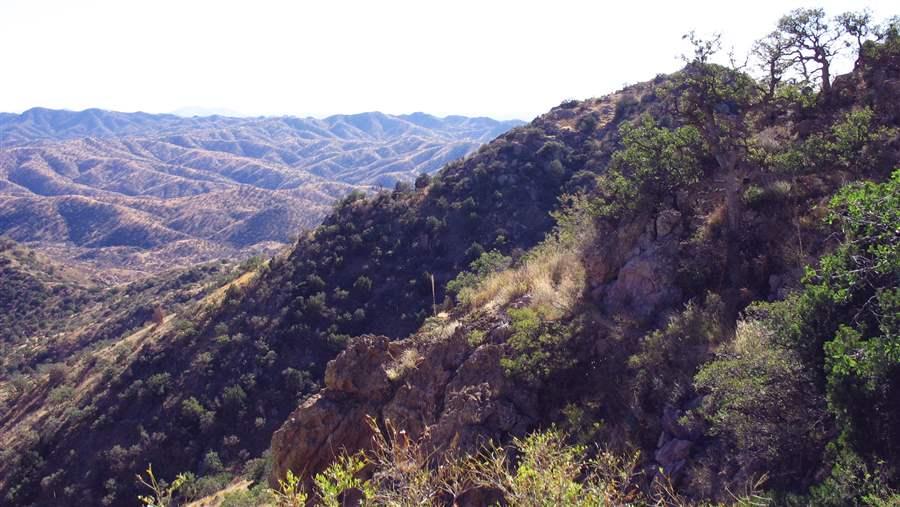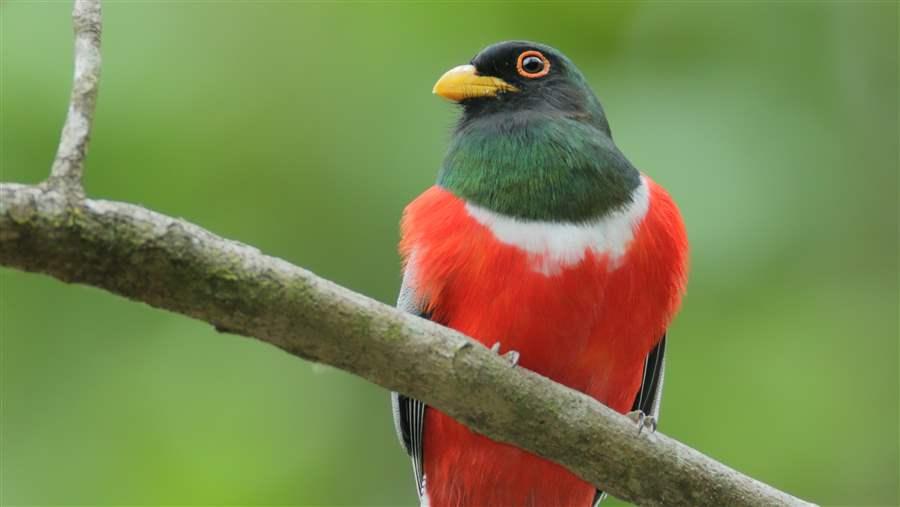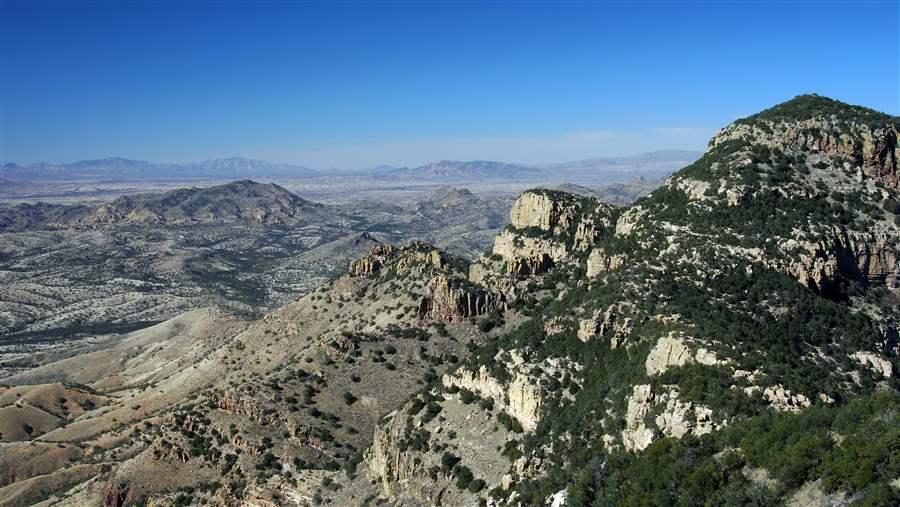Southern Arizona's Tumacacori Highlands Still Await Protection
Area's biodiversity threatened by growth

In the southern Tumacacori Highlands, subtropical oaks dot the landscape amid seas of grass on the Pajarita Mountains.
© The Pew Charitable Trusts
The Tumacacori Highlands are part of a chain of pine- and oak-studded mountains set at the confluence of the Sonoran and Chihuahuan deserts along Arizona’s southern border. They are part of a landscape of sky islands extending into northern Mexico—so called because of the radically different environments found in the upper reaches of the mountains and the lower-elevation grasslands surrounding them. Because of these extremes in elevation, the area supports the highest level of biodiversity in North America. A wide variety of plants and animals—including subtropical species such as jaguars, elegant trogons, and Chiricahua leopard frogs—find hospitable habitat here.

Southern Arizona is a mecca for bird lovers and is the only place in the United States to view the elegant trogon, which nests in the canyons each May.
© Getty Images
Thus it is no surprise that southern Arizona has long been the focus of conservation efforts. Rep. Raul Grijalva (D), who has served the state’s 3rd Congressional District since 2003, first proposed a bill to preserve Tumacacori as wilderness in 2004 and has reintroduced the legislation in every Congress since 2007. Grijalva wants the bill to pass for myriad reasons, including the fact that protected public lands are good for local economies. A 2005 Sonoran Institute study showed that people are drawn to live and work near safeguarded open space; this leads to vibrant local and regional economies and higher-paying jobs.
For the past 25 years, Arizona has been among the 10 fastest-growing states in the country, which is good for the state’s economy but puts extra pressure on undeveloped areas, including the state’s beautiful wild public lands. The Tumacacoris lie just 55 miles of south of the second-largest metropolitan area in the state—Tucson—so they are vulnerable to land use and natural resource issues, such as allotment of scarce water resources and the impact of a growing human population on wildlife habitat.

Stunning views like this near Atascosa Mountain are the rewards for the trip up the peak’s namesake trail.
© The Pew Charitable Trusts
Perhaps the best view of the Tumacacori Highlands can be had from the site of an old fire service lookout station on Atascosa Mountain. It’s a long, winding path to the top that is not steep but is rocky in places, with a thorny chaparral gantlet that edges onto the trail and leaves its mark on the exposed arms and legs of distracted hikers. The panoramic view from the summit makes the climb worthwhile and is perhaps best summed up by the iconic desert writer Edward Abbey, who spent the summer of 1968 living in a cabin there: "Woke up this morning on an island in the sky, surrounded by clouds. Wild swirling banks of vapor, flowing and passing to reveal brief glimpses of rocky crags, dripping trees, the golden grassy hillsides far below."
The cabin burned in a massive wildfire in June 2011, but Abbey’s view of the Tumacacori Highlands is still there awaiting discovery by whoever wanders by next. Protection of the area, starting with congressional passage of Grijalva’s bill, would ensure that future adventurers find the spot as mesmerizing as Abbey did.
Mike Matz directs The Pew Charitable Trusts’ U.S. public lands program, focusing on wilderness and national monument projects












